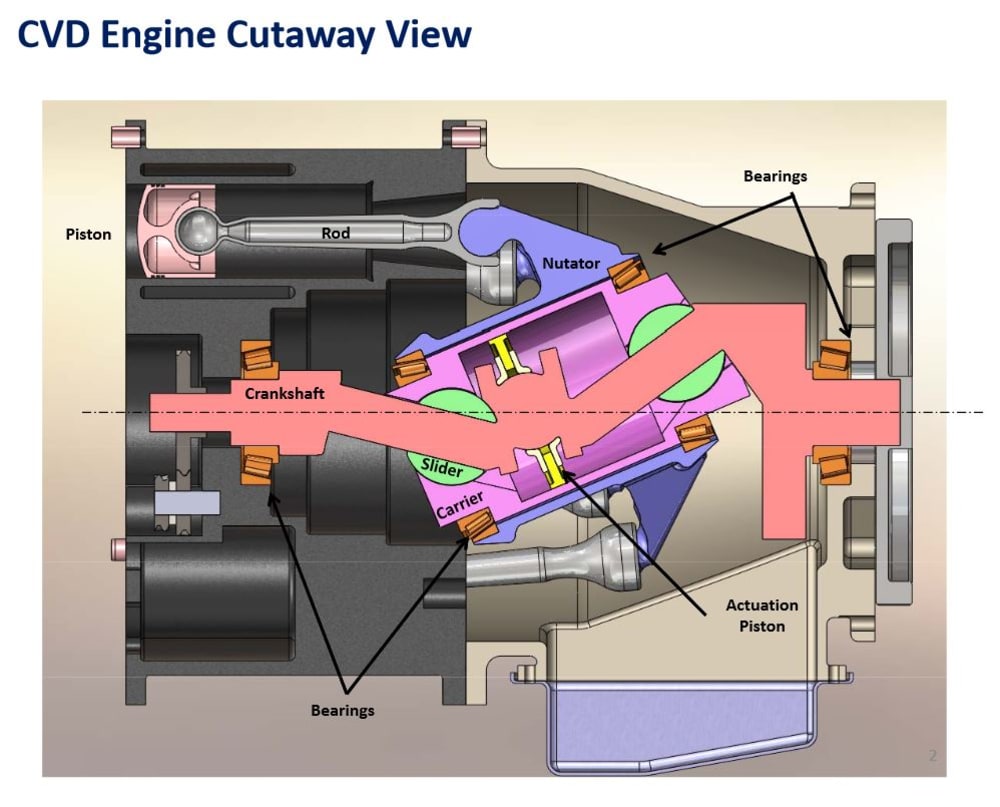

Passenger car engines are sized to produce very high horsepower to suit the consumer’s demand for drivability and performance. Unfortunately, engines run most efficiently at high load conditions and very inefficiently at the low loads where they spend most of their time. This results in poor fuel economy and high CO2 emissions.
ESI’s continuously variable stroke engine expands the high efficiency operating region into the area where the engine operates during normal driving. This is accomplished using a unique patented crankshaft and connecting rod system that allows the distance the pistons travel to be adjusted on an immediate and continual basis while adjusting the combustion volume to maintain the same compression ratio. The engine is essentially being “sized” in real time to efficiently produce the necessary power and reduce many of the losses associated with a conventional drive train.
The engine eliminates the throttling loss as well as reduces the reciprocating friction losses by more than 50%, and maintains the full expansion ratio of full stroke at even low power settings.
GT Power simulation shows a 30% improvement in fuel consumption over the Federal test cycles compared to an equivalent displacement gasoline engine.
Video
-
Awards
-
 2014 Automotive/Transportation Category Winner
2014 Automotive/Transportation Category Winner -
 2014 Top 100 Entries
2014 Top 100 Entries
Like this entry?
-
About the Entrant
- Name:Steve Arnold
- Type of entry:individual
- Software used for this entry:SolidWorks Simulation Professional, SolidWorks, StarCCM+, GT Power
- Patent status:patented








